by Azra Raza
All of the articles in this series can be found here.
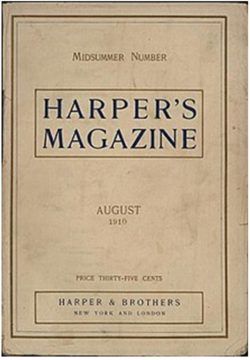 On May 31st, 2021, I sent an email to John Pawelek, Senior Research Scientist at Yale University, requesting a zoom meeting. When a week went by without a response, I decided to call. Searching for his number, I came across his Obituary instead. John Pawelek died on May 31st, 2021. Alas, I missed my chance to speak to a knowledgeable and accomplished scientist.
On May 31st, 2021, I sent an email to John Pawelek, Senior Research Scientist at Yale University, requesting a zoom meeting. When a week went by without a response, I decided to call. Searching for his number, I came across his Obituary instead. John Pawelek died on May 31st, 2021. Alas, I missed my chance to speak to a knowledgeable and accomplished scientist.
I had been reviewing the literature on metastatic spread of cancer and Pawelek’s work stood out, confirming the proposal of Otto Aichel from way back in 1911, that metastasis occurs when a tumor cell fuses with a blood cell. Fusion means good things for both cells; for the tumor cell, cozily ensconced inside a normal blood cell means it can now evade attacks from the immune system, and, as an integral part of a blood cell, it becomes mobile. Cloaked in secrecy, it can now travel all over the body with impunity. As for the blood cell, fusion with the cancer cell brings with it the ultimate gift; immortality.
Pawelek’s animal experiments and the direct evidence he provides of fused, hybrid cells in human cancers in support of Aichel’s hypothesis, are hard to ignore. The issue of symbiosis, a fundamental principle of biology, permeates non-biologic disciplines; fiction abounds with stories of interdependence, synergy, acts of cooperation, often with startling consequences for the individuals involved.
The Secret Sharer
Joseph Conrad’s The Secret Sharer is a novella first published in two parts in Harper’s Magazine in 1910. It centers around a young captain who discovers a runaway sailor hanging on to the ship’s ladder, fighting for his life. The captain pulls him up to safety. The sailor confesses that he killed a mate on his own ship and is trying to escape certain death penalty. He desperately needs shelter. The captain, who is the same age as the sailor, does not have the heart to return him to the open sea, or to the captain of the other ship. He ends up hiding the sailor in his own cabin.
Around the time I read this Conrad story, I was also obsessing about the birth of The First Cell in cancer. When I came across the work of John Pawelek, the story of The Secret Sharer acquired a new meaning. The ship’s young, inexperienced, insecure captain, in his mid-twenties, conceals a devious assassin in his cabin. He identifies with the murderous killer because, at some level, he too is needy and could benefit by associating with the sailor. He has never wielded such absolute control over a group of sea-faring, seasoned, mostly older men before. The decision to hide the sailor and the subsequent responsibility of delivering him to safety unbeknownst to his crew helped the captain grow up overnight. He learns to exert authority over the mistrusting men as he orders the ship to change course in a dangerous direction despite their palpable opposition. The assassin on the other hand, finds sanctuary with the captain and is subsequently deposited on a nearby island to search for a new home and a new life.
This whole scenario seems analogous to Otto Aichel’s vision of how cancers metastasize. A normal blood cell, finds itself isolated in an environment under stress. A malignant cell, among a growing mound of cancerous cells, is also isolated and in desperate need of shelter. They fuse. The death-defying mobile hybrid cell that emerges, endowed with properties of both parents, is deadlier, more aggressive, more invasive, more difficult to kill.
In the last two decades of his career, John Pawelek repeatedly provided proof of this remarkable fusion between a blood and tumor cell in animal and human tumors.
Resisting madness is the maddest way of being mad (Norman O. Brown)
In 2001, Perkins et al reported the case of a three-and-a-half-year-old boy who presented in a disoriented, combative state to the University of Minnesota. He was diagnosed with massive, fulminant liver failure. Apparently, ten months before the liver catastrophe, he was exposed to a chemical spill due to a train accident. There were large amounts of benzene in the leaked hazardous material. Benzene was the culprit suspected in the violent, irreparable liver damage the boy sustained. He had to be given a liver transplant, there was no other alternative. His own liver that was removed showed extensive necrosis with practically zero functioning liver cells. Whatever he was exposed to was clearly deadly.
Seven months later, his bone marrow abruptly stopped working. Just like the liver, the marrow simply failed. This time, he was diagnosed with a very severe case of aplastic anemia. This complication is not unknown after liver transplants, more common in children than in adults, and is thought to be related to whatever it is that destroyed the liver. Again, the damage was so devastating, there was no alternative except a bone marrow transplant, which, he duly received from his six-year-old brother.
As if two organ failures requiring transplants were not bad enough, eight months later, he developed a cancer of the kidneys. Cancer that had already metastasized to the lymph nodes. These tumors were surgically removed. But then, six years after the marrow transplant, he developed yet another malignant tumor, this time in the parotid gland. This was also surgically resected.
Rupture to Rapture
One can only speculate about the causes of so many near fatal illnesses in one tiny budding little creature. First came Benzene with its well-known violent manifesto, wreaking havoc, blasting the young body in acts of epic chemical tornadoes, leaving behind a cataclysmic wreck with total destruction of two vital organs to the degree that only replacement with borrowed organs could fix the damage.
But where on earth did the two primary cancers come from? Benzene could certainly be one of the contributors but there are additional insults to consider. What about the cytotoxic chemotherapies given as part of the preparative regimens for the dual transplants? And the post-transplant immuno-suppressive therapies he had to take for extended periods to control graft versus host rejection? Any or all of these could be the initiators or drivers of the malignant clone.
Despite multiple near-death experiences, not just from the organ failures and the cancers but also from the equally damaging therapies, the boy survived, outwitting them all in heroic feats of resistance. Life against Death. Time after time, the young body rallied back. It comes with the gestalt of the territory, the irrepressible, rapturously elevating vitality of youth. At eleven years of age, we see the boy in good health, receiving age-appropriate schooling while being treated for attention deficit disorder. Youth CAN attempt and achieve the impossible.
Fission, Fusion, Fraction, Faktura
How does one prove the union of a cancer cell with a normal cell in real life? A cancer cell is a normal cell gone awry. A fused cancer + blood cell in the individual would look like a cancer cell in the process of doubling itself. The only way to prove real fusion would be after a fission of sorts leading to the presence of “foreign” blood fusing with the host tumor cell. Voila! The boy had metastatic kidney cancer while his blood was now being made by his brother’s transplanted marrow. He had Type O and his brother had Type A blood groups. On the basis of the different blood groups, individual cells coming from him or his brother could be accurately identified.
Enter John Pawelek and team. They combined efforts with the University of Minnesota team and other experts to undertake this exhaustive research. Fractions of cancerous segments were painstakingly micro-dissected from lymph nodes embedded in wax and subjected to sophisticated molecular analysis. The team hit gold when metastatic tumor cells showed incontrovertible evidence of blood Type A in tumor cells. The faktura, or visual demonstration of properties inherent to materials, could only result from fusion of the boy’s tumor cells with his brother’s blood cells.
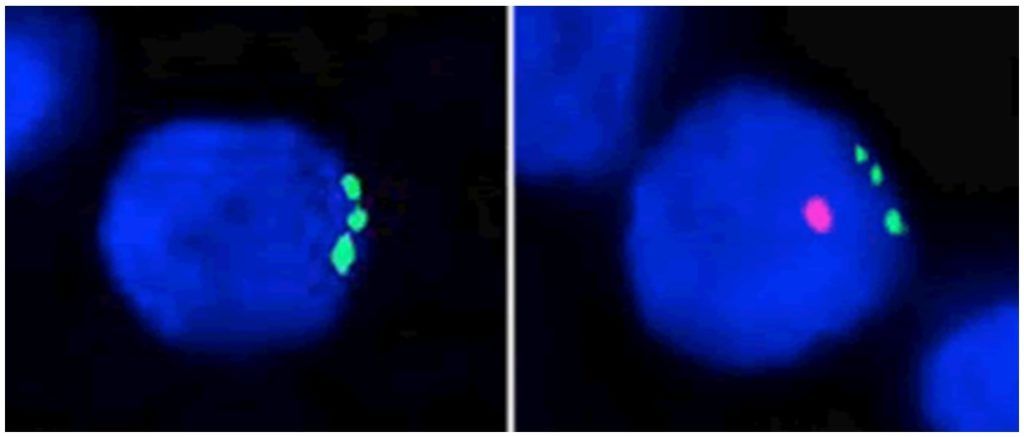 This kind of proof of fusion can only be sought in bone marrow transplant recipients who (rarely) go on to develop cancer. Another woman who received a bone marrow transplant from her fifteen-year-old son developed a renal cancer two years later. Malignant cells were marked by the presence of three copies of chromosome 17. Her son’s Y chromosome was found in the trisomy 17 containing tumor cells, once again proving fusion between donor blood cells and patient’s renal cancer cells.
This kind of proof of fusion can only be sought in bone marrow transplant recipients who (rarely) go on to develop cancer. Another woman who received a bone marrow transplant from her fifteen-year-old son developed a renal cancer two years later. Malignant cells were marked by the presence of three copies of chromosome 17. Her son’s Y chromosome was found in the trisomy 17 containing tumor cells, once again proving fusion between donor blood cells and patient’s renal cancer cells.
Several labs have provided proof of fusion since. Metastasis may not be the result of genetic mutations, rather as Pawelek summarized Aichel’s hypothesis:
White blood cell + Non-metastatic cancer cell = Metastatic cancer cell
What else is new?
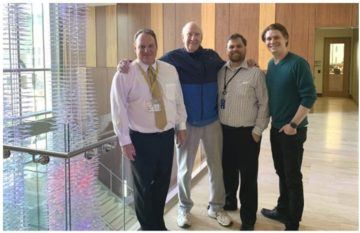 Pawelek also discovered other curious features of these hybrid donor-recipient cells. Tumor cells express many molecules unique to a certain type of blood cell called a macrophage. One function of the macrophage is to phagocytose and remove offending cells. Macrophage is the most likely candidate to fuse with a tumor cell. In fact, tumor cells express a repertoire of molecules and traits that are associated with macrophages like promoting new blood vessel formation, ability to move around, to respond to concentration gradients of chemicals, and express immune markers such as CD68 and CD163. How did these macrophage markers appear on, say, renal or breast cancer cells? Fusion again seems the most plausible explanation.
Pawelek also discovered other curious features of these hybrid donor-recipient cells. Tumor cells express many molecules unique to a certain type of blood cell called a macrophage. One function of the macrophage is to phagocytose and remove offending cells. Macrophage is the most likely candidate to fuse with a tumor cell. In fact, tumor cells express a repertoire of molecules and traits that are associated with macrophages like promoting new blood vessel formation, ability to move around, to respond to concentration gradients of chemicals, and express immune markers such as CD68 and CD163. How did these macrophage markers appear on, say, renal or breast cancer cells? Fusion again seems the most plausible explanation.
Hybrid cells also expressed a unique kind of sugar not found in normal adjacent cells; b1,6-branched oligosaccharides. These sugars were associated with coarse vesicles and electron microscopic studies showed that the vesicles represented auto-phagosomes. Phagocytosis is a process by which certain living cells called phagocytes ingest or engulf other cells or particles. High phagocytic activity is a well-known trait of blood cells like macrophages and has been associated with other cancers like breast and melanoma. “Cancer cells apparently produce organelles known as autophagosomes, with which the cells can digest chunks of themselves. Macrophages often produce autophagosomes as a means to snack on themselves while traveling, and cancer cells may do the same”. More evidence of fusion.
Yet another trait of metastatic cells in solid tumors is a switch from one form of cells called epithelial to another form called mesenchymal. This phenomenon is called the Epithelial-Mesenchymal transition or EMT. No one understands how or why this happens, but the transition allows the cell to free itself from its organ of origin and travel about. Pawelek proposed that fusion of a solid tumor cell with a blood cell was the basis of the epithelial to mesenchymal transition since tumor cells are epithelial in origin while blood cells are mesenchymal in nature.
A game of numbers
About 90% solid and 50% liquid cancers show abnormal number of chromosomes or aneuploidy. Another German scientist, Theodor Boveri, proposed the first theory of carcinogenesis based on aneuploidy in 1902, suggesting that a cancerous tumor begins in a single cell in which scrambled chromosomes cause the cell to proliferate uncontrollably. The fusion of a tumor cell with a blood cell would explain both aneuploidy and heterogeneity. When the two cells first join, their chromosomes are jumbled; some are deleted, some translocated, some missing in action entirely while others duplicated partially or wholly. As the fused cell divides, the rapidly reproducing daughters inherit abnormal numbers, some have more and some fewer chromosomes. This also explains why there are so many different genotypes in the population.
Otto Aichel: Espouser of eugenics, member of the Nazi party
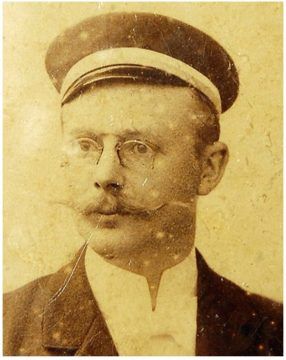 Who was Otto Aichel? John Pawelek was curious and summarized Aichel’s life as follows: “Aichel was born in Chile in 1871 as the son of a German diplomat. He studied medicine in Germany and specialized in gynecology. He had great interest in comparative anatomy and anthropology. Aichel was awarded a doctorate in 1896, and a medical degree in 1898. In 1902 he became professor of gynecology at the Universidad de Chile. Interestingly, in 1909 he had to leave Chile for Germany because he was involved in a cover-up of a highly political incident known as “Der Fall Beckert”.
Who was Otto Aichel? John Pawelek was curious and summarized Aichel’s life as follows: “Aichel was born in Chile in 1871 as the son of a German diplomat. He studied medicine in Germany and specialized in gynecology. He had great interest in comparative anatomy and anthropology. Aichel was awarded a doctorate in 1896, and a medical degree in 1898. In 1902 he became professor of gynecology at the Universidad de Chile. Interestingly, in 1909 he had to leave Chile for Germany because he was involved in a cover-up of a highly political incident known as “Der Fall Beckert”.
Historian of medicine, Karl- Werner Ratschko emphasizes Aichel’s widespread reputation as an espouser of eugenics in the 1920s. In 1923, Aichel founded a local society for eugenics in Kiel. Aichel became a member of the Nazi Party in 1932. Aichel was a supporter of Nazi eugenics and oversaw the sterilization of “inferiors”. However, his insistence on providing a scientific basis for eugenics was not appreciated by many of his Nazi colleagues and higher political officials, causing an intrigue against Aichel in the last years of his life. Thus, although Aichel’s ideology should have ensured him a successful career in Nazi Germany, he was suspended from working. Aichel died in Kiel in 1935 of coronary sclerosis.”
John Pawelek: Congressional Medal of Honor for participation in the Selma-Montgomery march in 1965
Two more starkly different phenotypes could hardly exist. While Aichel was a Nazi practicing Eugenics, Pawelek marched the last five miles of the Selma to Montgomery, Alabama, voting rights march behind Dr. King.
John Pawelek became fascinated by the fusion phenomenon when he simultaneously read a letter from three Czech doctors asking whether the fusion of tumor cells and white blood cells could cause cancers to metastasize and a book by evolutionary biologist Lynn Margulis, who “pioneered the idea that life on earth was revolutionized by ancient cells engulfing one another and fusing together, forming hybrids that had better chances at survival. “I was really excited by the connection,” he recalls. “Since there was a precedent for hybridization in evolution, why not in cancer?”
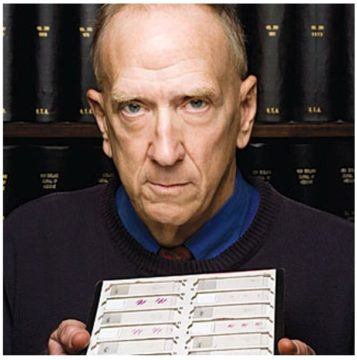 I quote from his Obituary here: John Mason Pawelek, 79, beloved husband of Linda Jane Pawelek, and long-time member of the research faculty in the Department of Dermatology, Yale School of Medicine, died Monday, May 31 of an apparent heart attack. As a child he loved sports, excelled in baseball and basketball, and did a stint as batboy for the Baltimore Orioles in 1954.
I quote from his Obituary here: John Mason Pawelek, 79, beloved husband of Linda Jane Pawelek, and long-time member of the research faculty in the Department of Dermatology, Yale School of Medicine, died Monday, May 31 of an apparent heart attack. As a child he loved sports, excelled in baseball and basketball, and did a stint as batboy for the Baltimore Orioles in 1954.
He earned a doctorate in biology from Brown University in 1967 and eventually moved to Yale where he ran a research lab for four decades. He authored nearly 200 peer-reviewed papers and is a co-founder and past president of the Pan American Society for Pigment Cell Research (PASPCR). He had many fond memories: playing piano (once) with Fats Domino, a college choir tour to Europe and the USSR.
His son Nathan said, “John Pawelek was fascinated with the Borg cyber creatures from Star Trek. While the “collective” was analogous to a communistic society, I think his fascination had more to do with the hybridization concept.”
Is it all resolved?
Fifty years after Otto Aichel’s initial hypothesis, interest was rekindled in it by the work of David Goldenberg and others in 1980s showing that implanted tumor cells could spontaneously fuse with cells in lab animals and spread. Lack of technology was a serious impediment to identify true fusion and attention waned again. Pawelek and others revived interest in fusion as a cause of metastasis but it has not been accepted by the mainstream community of cancer researchers. The next essay will discuss the controversies surrounding the work and what the future holds. In the meantime, l end with the coda to the little boy’s story that started Pawelek’s search for fusion.
Repair to Rupture
In an attempt to get some follow-up on the little boy who launched John’s interest in pursuing the fusion story in transplant recipients, I reached out to one of the authors of the original report, Joseph Neglia, now the Department Head and Professor of Pediatrics at the University of Minnesota. Joe was more than gracious. He reviewed the records of the patient at my request. It seems that the repeated chemical and physical assaults on his young body finally took their toll. He died at 17 years of age from complications related to a host of co-existing chronic health issues. You will return to the ground, since from it you were taken; for dust you are and to dust you will return.
“Unknown to trade, to travel, almost to geography, the manner of life [the islands] harbor is an unsolved secret.”
—Joseph Conrad
***
Perkins et al: https://www.nature.com/articles/1703177
Chkraborty A showing donor cell DNA in renal cancer: https://www.nature.com/articles/1704547
Picture of cells showing trisomy 17 and Y chromosome by FISH: Pawelek et al https://www.scientificarchives.com/article/leucocytetumor-cell-hybridization-can-initiate-cancer-metastasis
Picture of John Pawelek in the Denver lab of Greggory LaBerge with permission from GL
Picture of Otto Aichel: https://www.wikidata.org/wiki/Q1383917
Picture of John Pawelek: https://www.scientificamerican.com/article/investigating-cancers-deadly-fusion/
